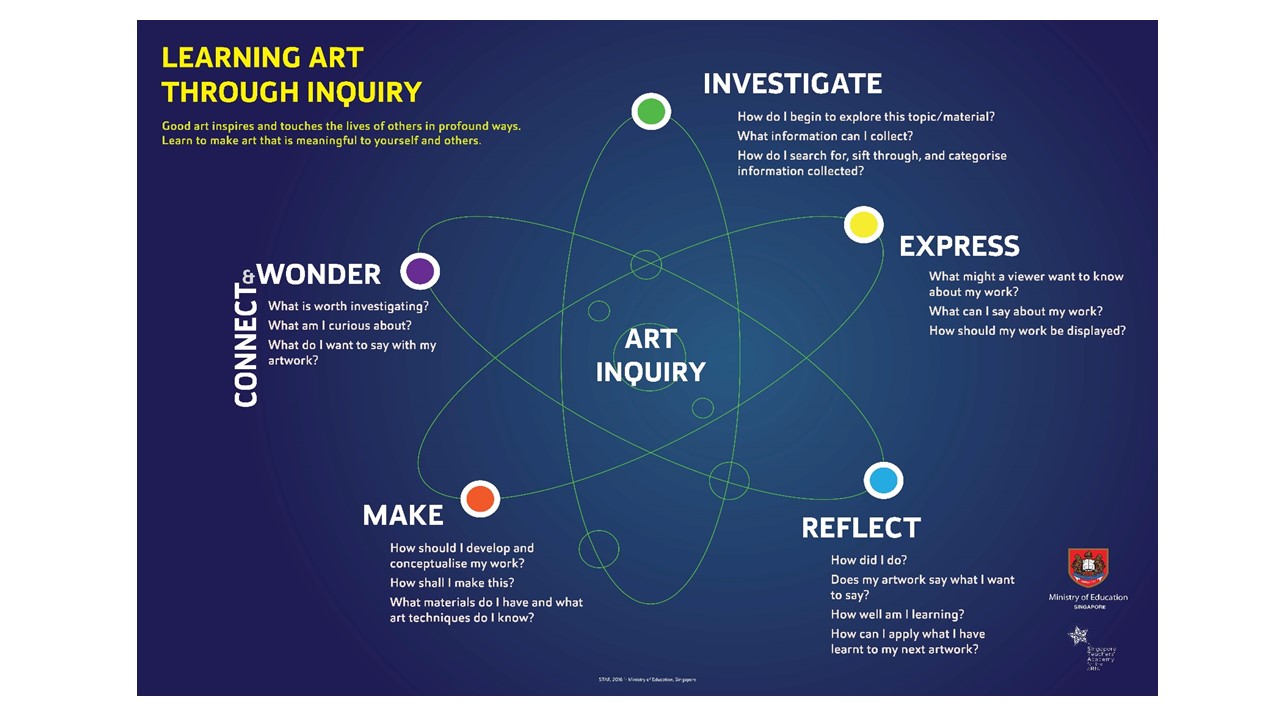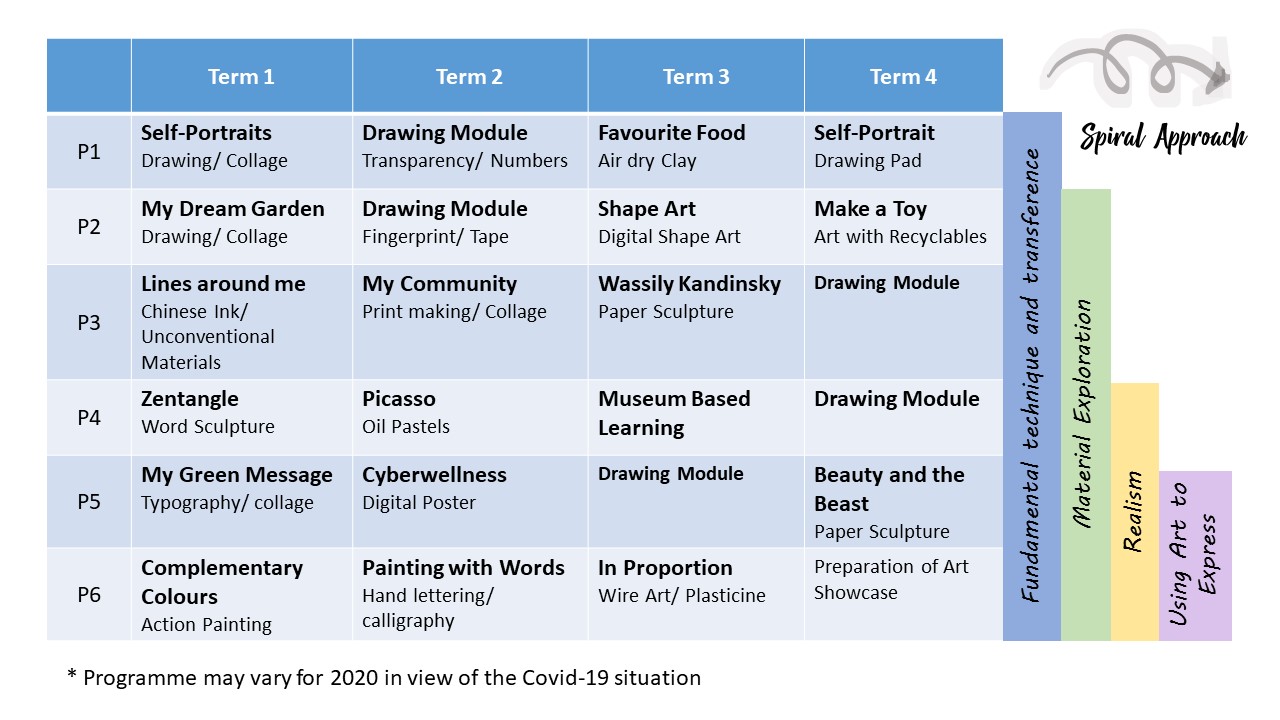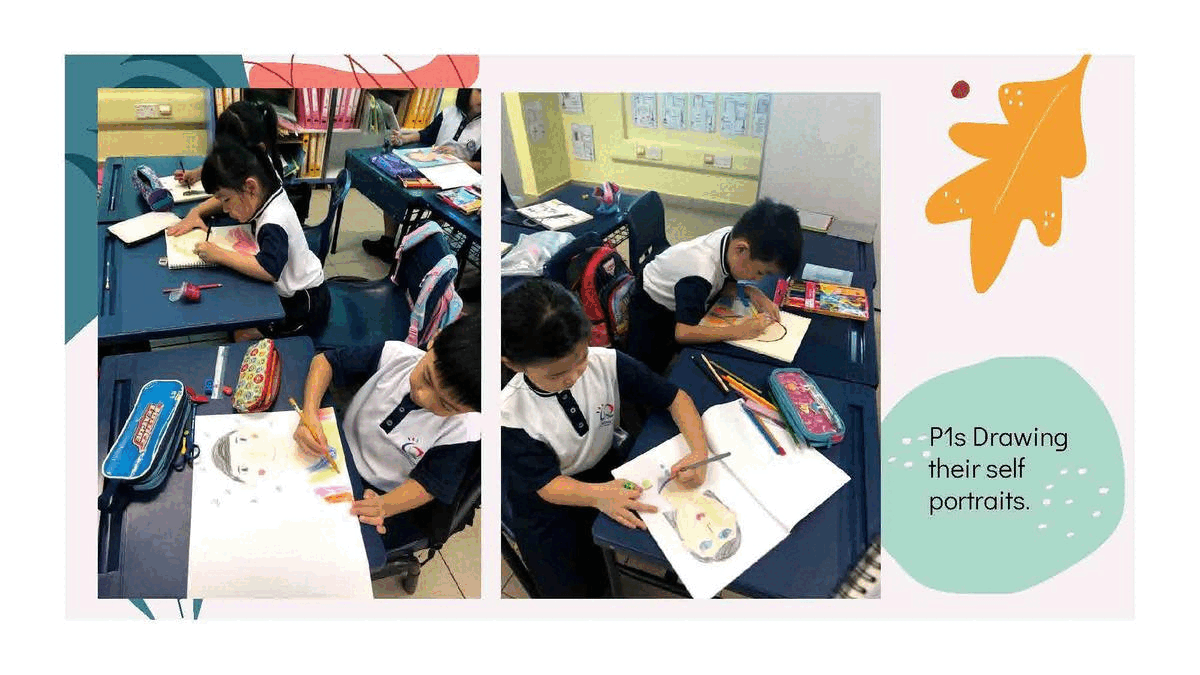Visual Art
Mission
To provide a holistic education to develop confident and self-directed learners, concerned citizens and active contributors.
The QtPS Visual Art department believes that aesthetics play a fundamental role in stimulating cognitive development, encouraging innovative thinking and creativity. This helps them to form meaningful relationships with the environment they are in. Students’ creativity is encouraged through Artistic expression, and when their individuality is uncovered, their self-confidence is bolstered. This then fuels their motivation in learning.
Pedagogical Approach
 |
|---|
| Inquiry based model by MOE STAR |
In our art curriculum, the pedagogical approach of inquiry is embedded in our weekly lessons. This is seen through the following structure:
- Connect and Wonder: Students are introduced to existing artworks and artists that are related to the module.
- Investigate: Everyday objects/ unconventional mediums are introduced for students to explore and experiment, guiding them to make choices during art making.
- Make: Termly modules with mini exploration exercises provide opportunities for students to interact with various art mediums which in turn, builds their experience and confidence in creating their final artwork.
- Express: Gallery walks and art talks make learning meaningful for students when their personal voice is captured in their final artwork. Manipulatives such as the Effective Art Talk Wheelie is used to help students build their art vocabulary.
- Reflect: Self-reflection of art making experience is introduced to students at the end of each module to help students collate their learning experience
Signature Programme

Our 6-year Visual Art Programme is designed to provide all students with an outlet of self-expression through experimentation with various materials and methods. It covers themes based on the alignment of our Lifelong Programme (LLP) ‘Connecting Hearts with the Arts’ and CCE topics that are explored in the school curriculum. The programme affords them a variety of experiences to enrich their knowledge and skills in the learning of arts. They develop their art-making skills and engage in art discussions to achieve visual literacy. Students expand their knowledge of art ideas and techniques through exposure to a variety of art forms that include sketching, doodling, painting, sculpting and collaging.
Take a look at our students @ work!


